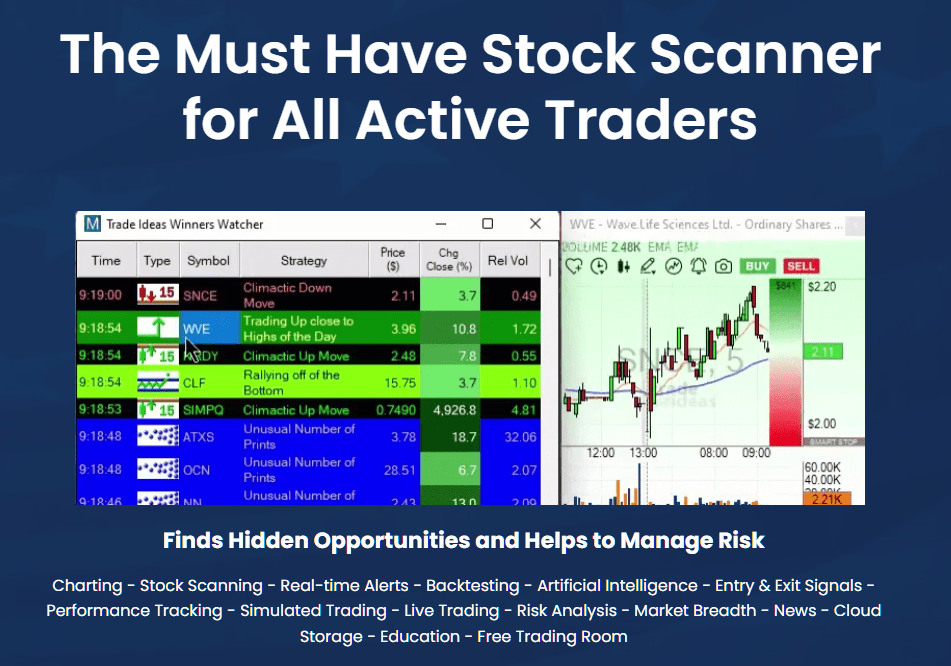20 Handy Reasons For Choosing AI Stock {Investing|Trading|Prediction|Analysis) Sites
20 Handy Reasons For Choosing AI Stock {Investing|Trading|Prediction|Analysis) Sites
Blog Article
Top 10 Tips On Assessing The Data Sources And The Quality Of Ai Stock Predicting/Analyzing Trading Platforms
In order to provide accurate and reliable information It is crucial to examine the sources and data that are used by AI stock prediction and trading platforms. A poor quality data source can result in incorrect predictions, financial losses and mistrust of the platform. Here are 10 best tips to evaluate data quality and source:
1. Verify the data sources
Check the source of the data. Make sure the platform uses trusted and reliable providers of data, like Bloomberg, Reuters or Morningstar.
Transparency: The platform should be transparent about its data sources, and regularly update them.
Avoid single source dependency Most reliable platforms combine information from multiple sources to minimize biases.
2. Assess Data Freshness
Real-time data is different from. data delayed Find out if your platform offers delayed or real-time data. Real-time data is vital to ensure that trading is active, whereas delayed data is sufficient for long-term analysis.
Update frequency: Check if the data has been changed.
Accuracy of historical data - Check that all historical data is constant and do not have gaps or irregularities.
3. Evaluate Data Completeness
Find missing data.
Coverage: Make sure the platform covers a wide range of stocks, indices, and markets that are relevant to your strategy for trading.
Corporate actions: Make sure that the platform records dividends, stock splits mergers as well as other corporate actions.
4. Accuracy of test data
Cross-verify data: Compare the platform data with that of other reliable sources to ensure consistency.
Error detection: Search for outliers, erroneous price points or financial metrics.
Backtesting. Utilize old data to test your trading strategy and see if it matches expectations.
5. Granularity of data can be evaluated
Detail You should obtain granular information such as intraday volumes and prices, bid/ask spreads, and the order book.
Financial metrics - Make sure to check whether there are financial metrics in a comprehensive statement (income statements, balance sheets, cash flows) and key ratios (P/E/P/B/ROE etc.). ).
6. Verify that the Data is Clean and Preprocessing
Normalization of data - Make sure that your platform is able to normalize your data (e.g. adjusts for splits or dividends). This helps help ensure the consistency.
Outlier handling: Examine how the platform deals with outliers or irregularities in the data.
Imputation of missing data is not working - Make sure whether the platform is using reliable methods to fill out missing data points.
7. Check data to determine if they are consistent.
Timezone alignment: Align data according to the same timezone in order to prevent any discrepancies.
Format consistency: Verify that the data has been presented in a consistent manner (e.g. currency, units).
Cross-market consistency: Verify that data from multiple markets or exchanges is harmonized.
8. Relevance of Data
Relevance of the data to your trading strategy: Make sure your data is in sync with your trading style.
Feature Selection: Determine whether the platform offers relevant features, such as sentiment analysis, economic indicators, and news data, which can improve the accuracy of your predictions.
Check the integrity and security of your data
Data encryption: Ensure that the platform is using encryption to protect data storage and transmission.
Tamper-proofing : Ensure that the data hasn't been altered by the platform.
Conformity: Ensure that the platform you are using is compatible with any laws governing data protection (e.g. GDPR, CCPA).
10. Test the platform's AI model transparency
Explainability - Ensure that the platform gives you insights into how the AI model utilizes the data to produce predictions.
Bias detection: Verify whether the platform is actively monitoring, and mitigates, biases within the models or data.
Performance metrics. Examine the performance metrics, such as precision, accuracy, as well as recall to assess the reliability of the platform.
Bonus Tips
Reputation and feedback from users: Review user reviews and feedback to evaluate the reliability of the platform.
Trial period: Test the platform for free to check out how it functions and what features are available before you commit.
Customer support - Make sure that the platform is able to offer a robust customer support to resolve any data-related issues.
By following these tips to help you better evaluate the quality of data and sources of AI stock prediction platforms to ensure you take well-informed and trustworthy trading decisions. Take a look at the best ai investing app examples for site examples including ai trading tools, stock analysis app, ai stock picker, best ai for trading, chatgpt copyright, stock ai, investing ai, trade ai, incite ai, ai for trading and more.
Top 10 Tips On Assessing The Risk Management Of Ai Stock Prediction And Analysis Of Trading Platforms
Risk management plays an essential function in any AI-based stock trading platform. It protects your capital by minimizing possible losses and helps you to maximize profits. Platforms with strong risk management capabilities will help you navigate the turbulent stock markets and make an decisions based on information. Here are the top ten suggestions to evaluate the risk management capabilities of these platforms.
1. Evaluation of Stop-Loss & Take-Profit Features
Level that you can customize: You should be able to customize the levels of take-profit and stop-loss for individual trades and strategies.
Find out if the platform allows the use of trailing stops. They automatically adjust themselves as the markets move in your favor.
Guaranteed stops: Check if the platform offers guaranteed stop-loss orders, which ensure your position is closed at the exact price even in markets that are volatile.
2. Tools to Measure Positions
Fixed amount: Ensure the platform permits you to determine the size of your position based on an amount that is fixed in monetary terms.
Percentage portfolio: Find out whether the risk can be controlled in a proportional way by setting your positions as a per percentage of your portfolio.
Risk-reward Ratio: Make sure that the platform allows for setting up individual risk-reward levels.
3. Make sure you have Diversification Support
Multi-asset trading: Make sure the platform permits you to trade across different asset classes, like ETFs, stocks, and options. This will allow you to diversify your portfolio.
Sector allocation: Ensure that the platform is equipped with instruments to monitor the exposure of different sectors.
Geographic diversification: Check if the platform for trading supports international markets in order to spread risk across different geographical areas.
4. Review leverage and margin controls
Margin requirements: Ensure that the platform clearly discloses margin requirements for leveraged trading.
Check if your platform allows you to limit leverage to manage the risk of exposure.
Margin call: Make sure that the platform has timely notifications for margin calls. This will help prevent account closure.
5. Assess the Risk Analytics Reporting
Risk metrics: Ensure that the platform provides important risk indicators for your portfolio (e.g. Value at Risk (VaR) Sharpe ratio, and drawdown).
Analysis of scenarios: See whether the platform allows users to create different scenarios of market to determine possible risks.
Performance reports - Make sure that the platform provides detailed performance reporting, including the risk-adjusted returns.
6. Check for Real-Time Risk Monitoring
Monitoring of portfolios - Make sure that the platform you select offers real-time monitoring to ensure your portfolio is protected.
Alerts and notifications: Determine whether the platform is able to provide real-time alerts regarding risk-related events (e.g. Margin breach and Stop-loss triggers).
Risk dashboards: Ensure that the platform has customized risk dashboards that give you a full overview of your risk profile.
7. Evaluation of Stress Testing and Backtesting
Stress testing - Ensure that your platform allows you to stress test your portfolios and strategies in extreme market conditions.
Backtesting. Find out if the platform permits backtesting. This is the use of data from the past to evaluate the level of risk and performance.
Monte Carlo: Verify the platform's use of Monte-Carlo-based simulations to evaluate risk and modeling a range or possible outcomes.
8. Risk Management Regulations: Assess compliance
Compliance with regulatory requirements: Ensure that the platform is compliant with relevant risk-management regulations (e.g. MiFID II, Reg T, in the U.S.).
Best execution: Check to determine if your platform is following the best execution practices. This will ensure that trades are executed at the most efficient price while minimizing slippage.
Transparency: Find out whether the platform has clear and transparent disclosures of risks.
9. Look for parameters controlled by the user.
Custom risk management rules: Ensure the platform you select allows you to create unique risk management guidelines.
Automated risk controls You should check whether your platform is able to apply risk management rules automatically on parameters you have established.
Manual overrides: Find out whether the platform permits manual overrides to automate risk controls in case of emergencies.
Study Case Studies, User Feedback Review Case Studies, User Feedback Case Studies
User reviews: Read user feedback to determine the platform's effectiveness at risk management.
Case studies: Search for case studies or testimonials that demonstrate the ability of the platform to control risks.
Community forums - Check to see if the platform has a community for users that is active, and where traders are able to share their strategies for managing risk.
Bonus Tips
Trial period: You can make use of a demo or a no-cost trial to test out the risk management tools of the platform.
Support for customers: Ensure that the platform offers a solid support to any questions or concerns related to managing risk.
Educational resources: Find out whether your platform provides educational materials or tutorials that explain risk management practices.
Follow these tips to assess the risk management capabilities of AI trading platforms that predict/analyze the price of stocks. Choose a platform that offers a high level of risk management and you will minimize your losses. To manage unstable markets and to achieve long-term gains in trading, you need robust risk management software. Take a look at the top stock market software info for more info including ai copyright trading bot, ai stock price prediction, trading chart ai, ai investment platform, ai stock picker, ai based trading platform, copyright ai trading bot, ai investing app, ai chart analysis, best stock advisor and more.